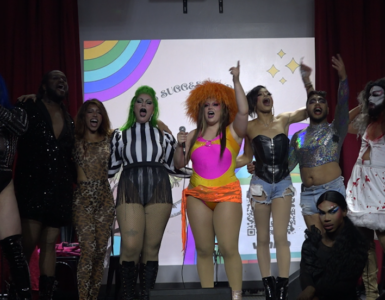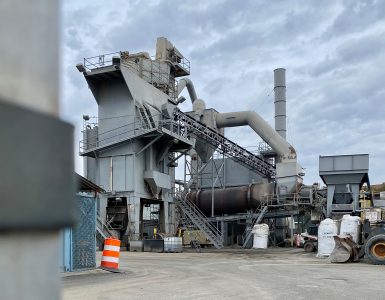Christina Robbins’ two children log onto their online lessons at about 8:45 a.m. with the help of a pod leader.
Her son, Theodore, attends preschool at Langley Elementary School in Eckington. Each day he’s joined by another Langley Elementary preschooler. The same goes for Robbins’ daughter, Elena, a first grader, who is joined by two of her classmates.
Together, their five-student learning pod has fallen into a rhythm. The preschoolers finish around 11 a.m. and then do asynchronous activities while the three first graders continue until about 2 p.m. with a break for lunch and exercise.
“They have to wear masks all day,” Robbins said. “It’s good for them to practice those skills for when we do go back.”
Langley Elementary School, like all D.C. elementary schools, will welcome some students back Nov. 9.
Mayor Muriel Bowser announced Oct.5 that D.C. Public Schools would begin a phased reopening plan, beginning with the elementary schools, at the beginning of the second term.
Classrooms will be limited to 11 students and only one class will open per grade. Students will be given the option to return to the classroom on a lottery basis. If their child is chosen, parents have the option to stick with online learning or transition to in person. Classrooms for special education and supervised online learning are also slated to open.
Langley Elementary is also one of several D.C. schools undergoing an HVAC system upgrade. According to minutes from the Sept. 23 parent teacher organization meeting published on the school’s website, there is also an ongoing bathroom project.
But, for Robbins and other Langley parents, the specifics are still murky.
Although Mayor Bowser tweeted an explainer video showing some details of the air filtration updates, Robbins also hasn’t heard any updates on what that looks like at Langley.
“You are kind of in this limbo,” Robbins said.
She doesn’t know if the projects will be complete in time for students to return, or if her children will be among the first to resume in-person classes.
A new, new normal
Robbins doesn’t think her children will be included in the first wave of students to return back to school. She’s paid for another month of pod learning and said she’s keeping an open mind about what comes next.
“I’m thankful that we’re able to navigate it,” Robbins said. Both she and her husband are able to work from home. “So, we are really lucky in that regard, but I can’t imagine the stress for people who aren’t.”
Robbins said she realizes the choice to go back to school isn’t really a choice for everyone. Parents whose jobs don’t allow for teleworking need their children in a safe learning environment. Meanwhile, other children – those who have or live with others who have pre-existing conditions – can’t return to school.
For those reasons Parent Teacher Organization president Annie Wright is glad DCPS is making returning to in-person learning optional.
Like Robbins, Wright counts herself lucky. Her sister has been able to help her fifth-grade son with technical issues while Wright works from home. But the transition to virtual learning wasn’t easy. It took a lot of hand holding, Wright said.
“So now that he is finally comfortable and there is rhythm it’s going to be difficult … to get him back into the school,” Wright said.

Wright said her son will likely stay with the virtual format. But even if students don’t return to the classroom, a transition is coming for many of the District’s elementary students. The smaller class sizes will mean reassigning teachers.
Right now, Wright’s son has four teachers he works with regularly. But two of those teachers will go back to onsite roles, leaving two online.
She said some parents are worried that since the children have become accustomed to their teachers, it will be difficult to transition to a new teacher
Joe Weedon, spokesman of the Washington Teachers’ Union, said the organization is also concerned about the effect that the transition from entirely virtually to partially in person will have on D.C. students.
“There is a huge concern on our part that we are going to disrupt the learning that is taking place and damage the social and emotional health of our students,” Weedon said.
Robbins said she’s taking deep breaths, but she has given some thought to what a partial transition looks like and how it will affect the learning routine.
“I think every transition for a child is a little bit traumatic.”
“I think every transition for a child is a little bit traumatic,” Robbins said. “How do you keep that education moving forward? That structure helps them learn.”
The next Langley PTO meeting is Oct. 21. Robbins and Wright said they are expecting more information not just about which students will be returning to the building, but the building itself.
Wait and see
Langley Elementary School is one of several facilities undergoing an HVAC system update.
COVID-19, the disease caused by the novel coronavirus, is primarily spread through close contact with someone who is carrying the live virus. However, the Centers for Disease Control and Prevention updated its information on COVID-19 spread Oct. 5 to also account for airborne transmission.
Although it is much more likely to catch the virus due to close contact, there have been some documented cases where small particles became trapped in the air and infected people more than six feet away from the person positive for the virus. According to the CDC website, this is more likely to occur in small, enclosed spaces.
Which is why Weedon said his organization is particularly interested in the HVAC project.
“Social distancing alone isn’t enough to protect our teachers and students if the air is stagnant, the aerosols, the particulates will linger,” Weedon said.
He said that by making sure there is circulating fresh air, it is less likely that there will be a risk of infection due to aerosolized particles.
Mayor Bowser tweeted a video Monday showing the types of air filters that are being installed in DCPS classrooms. But Robbins said she’s anxious to see what that looks like at Langley specifically.
Along with safety protocols, air cleaners and HVAC filters can help reduce airborne contaminants including viruses. @dcpublicschools has invested in new HVAC enhancements and medical-grade air filters in our school buildings.
To learn more: https://t.co/Hey4wS6aud#ReopenStrong pic.twitter.com/Qk494y656d
— Mayor Muriel Bowser (@MayorBowser) October 19, 2020
She said the school doesn’t have a pushed air system. According to the Sept. 23 PTO meeting minutes, administration had found problems with some of the air conditioning units within the building.
“So, my question is are they changing all the filters, are they putting in HEPA filters?” Robbins said.
Despite their concerns, both Robbins and Wright applaud Langley Elementary administrators and teachers for their work in the last months.
Robbins said her children are incredibly engaged during their lessons despite the virtual format. As for Wright, even though it can be slow, she’s grateful for Principal Kristina Kellogg’s communication throughout the transition.
“I’m very understanding of her position and not wanting to give too much information,” Wright said. “She just wants to make sure it’s truthful information and concrete information.”
The only thing to do now, the pair said, is wait for more of that information.














Add comment